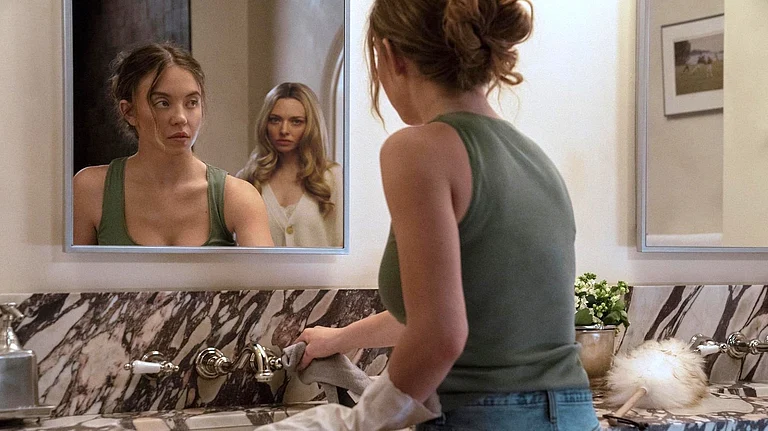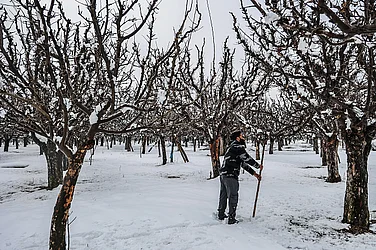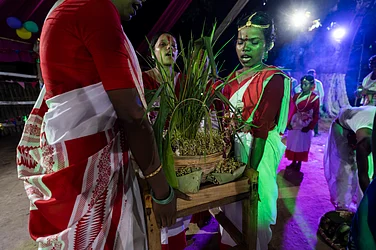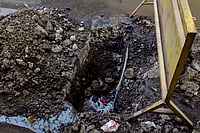How Not To Get Malaria, Or At Least Lower The Probability
- Outdoor spraying, indoor sprays, mosquito repellents, mosquito nets, coil-burners, finding a medicated net...all help.
- The best antidotes are window screens, full-sleeve clothes and nets, which the govt distributes at 2.3 nets per family of five.
- Not walking about in the early mornings, the most dangerous time of the day to attract the female Anopheles mosquito.
- Not letting clean water collect in pools, puddles or even in buckets at home. So water scarcity is adding to the spread.
- Get tested before taking the correct dose of malaria medicine. Overdosage of medicines has led to lower immunity.
- Avoid swamps and marshes, areas where malaria is endemic. This covers all the states in eastern and N-E India.
- Most malaria deaths occur in states (eastern ones) where there’s lots of the most dangerous malaria, Falciparum. Beware.
- There’s no vaccine for malaria, and it could take years before one is developed. New malaria medicines are being developed.
***
The Search For A Cure...
- India consumes over 200 tonnes of anti-malarial drugs annually. There is an increasing resistance to existing drugs.
- A vaccine could be decades away. They are expensive and time-consuming to develop.
- WHO indicates that RTS,S—a vaccine being developed by GSK—may be possible by 2015.
- Another vaccine in the works at India’s ICGEB as well, where progress is in the early stages
- Anti-malaria drugs Artemesinin and Quinine have been developed from natural plant sources
- The first artificial, indigenous malaria drug, Synriam, was launched in April 2012.
***
Mumbai-based filmmaker Jharna Jhaveri felt the familiar chills this July while travelling through rural Madhya Pradesh. “It always begins with a mild fever, which starts raging in a couple of days,” she says. “But then there are so many mosquitoes in that place, and so many bite you, that malaria never comes as a surprise.” Now at home in Mumbai, Jharna is consulting a naturopath for treatment, not the allopathic doctors who advised Chloroquine—the usual fare—and rest. “Chloroquine only makes my malaria worse. I am quite sure it doesn’t work for me,” she says.
A thousand kilometres away in Delhi, T. Aniruddhan, an export house employee, is also recovering from a bout of malaria, his second in 10 months. His doctor, S. Chatterjee at Apollo Hospital, says this shouldn’t have happened. “Last year, we wiped out all traces of his previous malaria. This must be a fresh infection,” he says. Aniruddhan’s fever rose from normal to a life-threatening 104.5 degrees in a matter of three hours one morning in July. Since mosquitoes regularly swarm his workplace in Okhla and his home near Chirag Dilli, he can’t really pinpoint where he caught it from.

What he’s sure about is that he wants to avoid a third round—fixing each bout was not just nerve-wracking, it also cost Rs 50,000 each time. “Last year, the Municipal Corporation of Delhi sprayed insecticides at my office and home immediately after my diagnosis,” Aniruddhan says. The municipal authorities tried to trace the guilty mosquito (the one that carried the first infection) by quizzing residents and co-workers about recent travels. This year, though, nobody with a spray gun showed up. So Aniruddhan took his only precaution: stopped taking his morning walk, since the malaria-bearing mosquito is an early morning hazard.
Malaria—a disease India had all but wiped out by the late 1960s thanks to liberal overdoses of DDT and Chloroquine—is back with a bang. Large swathes of rural India (wetlands, jungles, marshes, humid zones, high-risk areas) have always been at risk. Now, it’s afflicting more urban people, is increasingly resistant to drugs, and nobody really knows how much malaria is out there. Fatalities are on the rise, because the disease has been neglected by the government in recent years.
Deficient it may have been, but this year’s monsoon has already triggered nearly 500 cases in Delhi, beating dengue by a wide margin, according to doctors in large city hospitals. Almost anywhere you look in urban India, malaria is making its presence felt like never before. In 2010, the last year for which official data is available, some 80 per cent of malaria deaths in Maharashtra were reported from Mumbai itself. Ditto for Chennai. In Bhopal and Indore, malaria diagnoses are 70 per cent higher this year than last year.
“Of late, the problem of malaria has resurfaced in Mumbai, Ahmedabad, Chennai and other cities as well,” confirms Dr A.C. Dhariwal, director of the central government’s National Vector Borne Disease Control Programme (NVBDCP). “That is why the government has a separate programme for urban malaria, with intensive coordination between civic bodies and hospitals to identify cases.” This programme lists Delhi, Faridabad, Baroda, Vijayawada, Chennai, Vellore and Bangalore among the high-risk towns for malaria.

Hyderabad, Diagnosed, finally P. Avinash at the Fever Hospital. (Photograph by P. Anil Kumar)
Health experts point out that drug resistance, spread of a more virulent form of malaria (named falciparum after the protozoa that causes it) and lack of medical diagnoses of fevers are turning the disease—though still predominantly rural—into a major urban health risk. The issue is critical to India’s public health for several reasons: research has found a direct link between malnutrition, particularly anaemia, and malaria. Besides, malaria has a cure, making every death, be it rural or urban, all the more tragic.
“Nobody should die of malaria,” says Dr Prabhat Jha, who recently led a countrywide research, known as the Million Death Study (MDS), in collaboration with the Registrar General of Births and Deaths in India (RGI). “It’s a disease with a cure that can be diagnosed and usually cured in days. The government needs to take all fever cases, particularly in villages, seriously to stop the deaths.” Jha’s study—published in medical journal Lancet in March 2012—revealed that 2,00,000 Indians die every year of malaria, without ever being diagnosed.
The government’s estimate, however, is around 1,000 deaths. These are out of the roughly 1.2 to 2 million officially confirmed malaria cases. The catch is, the programme is effective only if it diagnoses you. “If you’re not officially diagnosed, you do not figure in any official statistic even if you die of malaria,” says Jha. “Nor would a policy to tackle malaria take your death into account, even if all your symptoms later confirmed the disease.” (Around 80 per cent of rural deaths in India are outside hospitals, in homes.)
A few decades ago, when six million cases of malaria used to be reported annually, 10 to 12 per cent were estimated to be in urban areas. Today, the disease burden is said to be 2 million, but the share of urban malaria is 8-10 per cent. “So, even if you go by official statistics, the disease is slowing in rural areas but picking up in urban areas,” says Dr Vinod Sharma, a noted malaria expert and former director of the National Malaria Research Institute (NMRI), a government body.
Tackling malaria is complicated. Six varieties of the Anopheles mosquito carry two radically different strains of the disease, and both mosquitoes and humans can develop varying levels of resistance to anti-malarial drugs. Heavy consumption of drugs is said to be a key culprit in resistance among humans. When India used to report six million malaria cases a year, 64 tonnes of Chloroquine was used for treatment. By the time the numbers fell to two million, CQ consumption zoomed to 400 tonnes. “Add 150-200 tonnes of other anti-malarial medicines, and it’s obvious there is misuse, incorrect dosage, hence resistant malaria,” says Dr Sharma.
In Max Hospital in Delhi, Dr Rommell Tickoo says resistance to malaria drugs has been rising for five or six years. “People visit doctors with fever, get treated for malaria without a blood test to confirm or rule out the disease. So we can’t really say how much resistance there is,” he adds. The government has instructed doctors not to prescribe anti-malarial drugs without diagnosis, except in obvious cases. The rule, though, is regularly flouted (private hospitals blame government hospitals, and vice versa), leading inevitably to drug resistance.
Yet, the chaos in diagnosis is widespread. Like in the case of Shahnawaz Ather, a 16-year-old student in Malakpet, Hyderabad, a city that can become a mosquito-breeding ground after just a day’s rainfall. His high fever lasted nine days despite the antibiotics prescribed by a local doctor. Only when his condition deteriorated was he brought to the Fever Hospital that identified malaria. Another young Hyderabad resident, P. Avinash, had chills, body ache and fever for two weeks. A private hospital prescribed antibiotics, needlessly, until the Fever Hospital, which also initially suspected he had jaundice, finally tracked down malaria. “Malaria cases have indeed risen over the last five years,” says Dr B. Vijay Kumar, a senior general physician at Yashoda Hospital in Secunderabad. He figures 20-30 per cent of his patients have drug-resistant malaria.
It took 40 years for resistance to Chloroquine to build up to today’s levels, although it is still considered effective in treating vivax malaria, the milder form. The question is: for how long? Meanwhile, the other line of treatment, using Artemesinin (a newer anti-malarial drug), is also on close watch for resistance. “Over the last two years, we have seen apprehensions of resistance rising in malaria,” says Dr Neena Valecha, director of the National Malaria Research Institute. A recent publication from the Thailand-Cambodia border has alerted health authorities across Asia that it is taking longer to clear the malarial parasite using Artemesenin. “We are monitoring the situation very closely,” says Valecha.

Delhi, The catch Jewellery designer Garima Nagpal, 33, was misdiagnosed several times till she was found to be afflicted with the deadly falciparum. (Photograph by Tribhuvan Tiwari)
Worse, malaria’s more virulent form—caused by and known as falciparum—has been annexing new territories outside the northeastern states, its original home. From less than 10 per cent in the 1950s and ’60s, this variety is estimated to account for 30 or 40 per cent of malaria cases today. And around 50 per cent of falciparum cases are fatal, compared with 1 per cent or less for the milder vivax. The problem is exacerbated by rapid, unplanned urbanisation, particularly water scarcity (which forces people to store water, and clean water breeds mosquitoes). At least 30 per cent of India now lives in 5,000 cities or urban conglomerates, many of which are emerging epicentres of water shortage.
The government admits that malaria deaths are underestimated, but its officers dispute the extent to which this happens. “Fresh estimates of malaria incidence,” says Dr Dhariwal of NVBDCP, “will be released as soon as we have them.” Dhariwal is overseeing the government’s effort to revise India’s malaria burden, in response to the Million Death Study on malaria (see interviews above). However, work on the revision has barely started—a go-ahead is awaited for a new method to count malaria cases. The final count will cross-check today’s figures, and also add fresh confirmed cases reported by 125 hospitals, recently declared “sentinel” sites for malaria.
“The issue isn’t just whether the sample tested by the Indian government is large enough. It’s also how we can keep good track of malaria’s increasing drug resistance and increasing virulence, and keeping track of changes in the disease pattern in endemic areas as well,” says Dr Pramesh Bhatnagar, a malaria expert at the Voluntary Health Association of India (VHAI). In Calcutta, for instance, malaria incidence is officially declining, and Moloy Bose, a hospital worker who collects blood samples for malaria tests, says that it is only during the “malaria months”—when it rains—that as many as 20 people want samples for suspected cases collected. About a fourth (five or six cases) turn out positive, no matter which part of the city he goes to get the sample. “Economic class or social strata hardly plays a role in malaria,” he jokes. “In Calcutta, you are bound to be bitten by a mosquito, no matter your relative position.”
That is the present—and scary—reality across vast parts of urban India today.
By Pragya Singh with Dola Mitra in Calcutta and Madhavi Tata in Hyderabad


























